Using CALGreen Bike Parking Requirements as a Guide
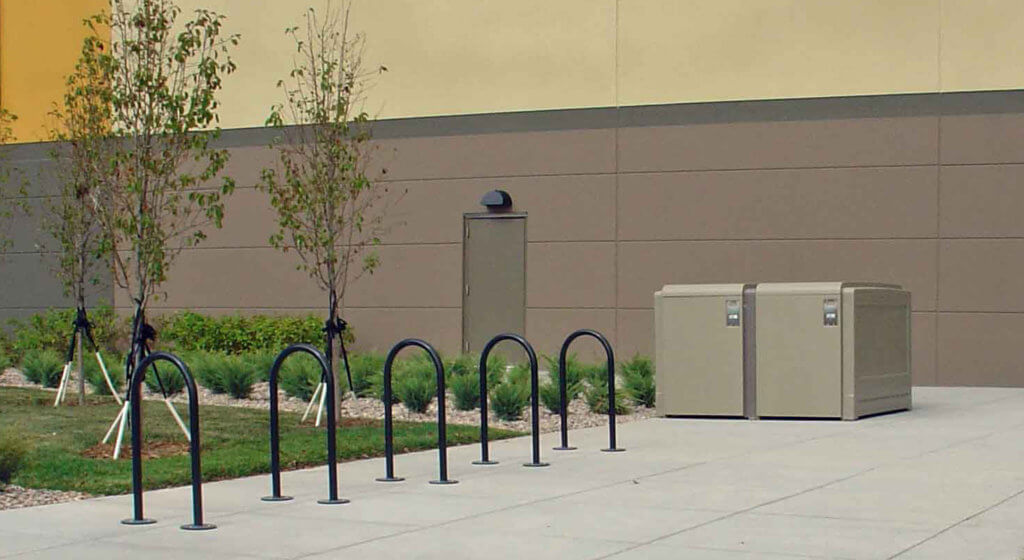
The 2016 California Green Building Standards Code (CALGreen) has mandatory bike parking requirements for non-residential structures. These regulations provide a good guidelines for the minimum recommended mix of short- and long-term secure bike parking for non-residential structures in all states.
Two of CALGreen’s objectives were to reduce greenhouse gasses from buildings, and promote environmentally responsible, cost-effective, healthier places to live and work. Biking to work and to other places helps achieve both of these objectives.
To encourage more biking, CALGreen addressed minimum levels and types of secure bike parking. Non-residential building owners must comply with CALGreen bike parking regulations or meet the applicable local ordinances, whichever are stricter. CALGreen has requirements for both short-term and long-term bike parking.
CALGreen’s short-term bike parking requirements relate to the anticipated number of vehicular parking spaces for building visitors, while long-term bike parking requirements are associated with the number of vehicular parking spaces for employees and regular occupants of the building.
CALGreen Requirements for Non-Residential Buildings
Short-term Bicycle Parking
If the new project or an addition or alteration is anticipated to generate visitor traffic, provide permanently anchored bicycle racks within 200 feet of the visitors’ entrance, readily visible to passers-by, for 5 percent of new visitor motorized vehicle parking spaces being added, with a minimum of one two-bike capacity rack. — Section 5.106.4.1.1
One exception to this regulation is that additions and alterations that add 9 or less vehicular parking spaces do not trigger mandatory compliance with CALGreen’s short term bicycle parking requirements.
For the purposes of CALGreen, an “addition” is defined as “an extension or increase in floor area of an existing building or structure.” An “alteration” is defined as “any construction or renovations to an existing structure other than repair for the purpose of maintenance or addition.” Under these definitions, CALGreen’s short-term bike parking regulations could be triggered even if a building’s renovation does not increase its square footage. If, as a result of alterations, vehicular parking spaces are increased by 10 or more parking spaces, the building owner would need to comply with this CALGreen short-term bike parking regulation.
Long-term Bicycle Parking Requirements
New Buildings
For new buildings with tenant spaces that have 10 or more tenant-occupants, provide secure bicycle parking for 5 percent of the tenant-occupant vehicular parking spaces with a minimum of one bicycle parking facility. — Section 5.106.4.1.2
Additions and Alterations
For additions or alterations that add 10 or more tenant-occupant vehicular parking spaces, provide secure bicycle parking for 5 percent of the tenant vehicular parking spaces being added, with a minimum of one bicycle parking facility. – Section 5.106.4.1.3
Phased Construction
For new shell buildings in phased projects provide secure bicycle parking for 5 percent of the anticipated tenant-occupant vehicular parking spaces with a minimum of one bicycle parking facility. — 5.106.4.1.4
What are Tenant-Occupants?
CALGreen defines “tenant-occupants” as “building occupants who inhabit a building during its normal hours of operation as permanent occupants, such as employees, as distinguished from customers and other transient visitors.”
What is a Bike Parking Facility?
When secure bike parking facilities are required, CALGreen defines those facilities as being one of the following:
- Covered, lockable enclosures with permanently anchored racks for bicycles;
- Lockable bicycle rooms with permanently anchored racks; or
- Lockable, permanently anchored bicycle lockers.
Examples
Example 1
A new building with 150 vehicular parking spaces is being built. The building is expected to have 100 full-time employees during its normal hours of operation.
Short-Term Bike Parking Requirement
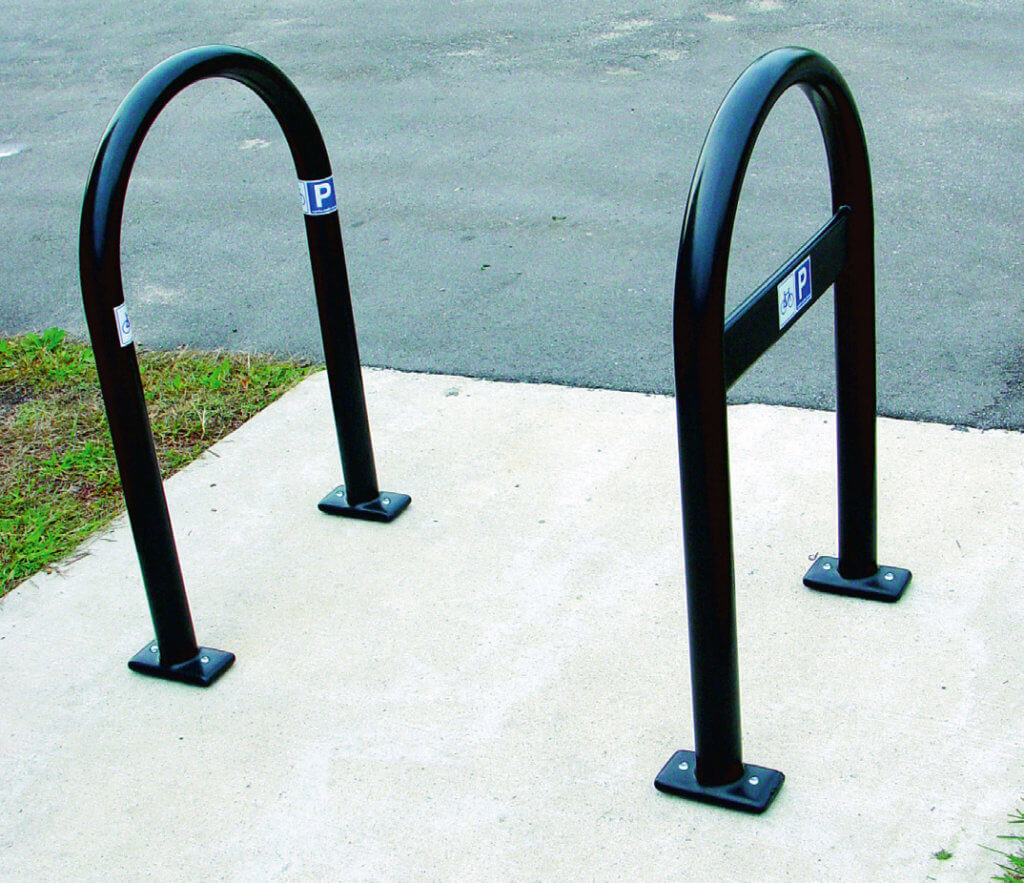
Within 200 feet of the visitors’ entrance, provide permanently anchored bicycle racks that allow at least 2 bikes to be parked in the racks. (50 new vehicular parking spaces for visitors X 5% = 2.5.) In this case, two CycleSafe Commercial Bike Racks could be used; these would accommodate up to four bikes.
Long-Term Bike Parking Requirement
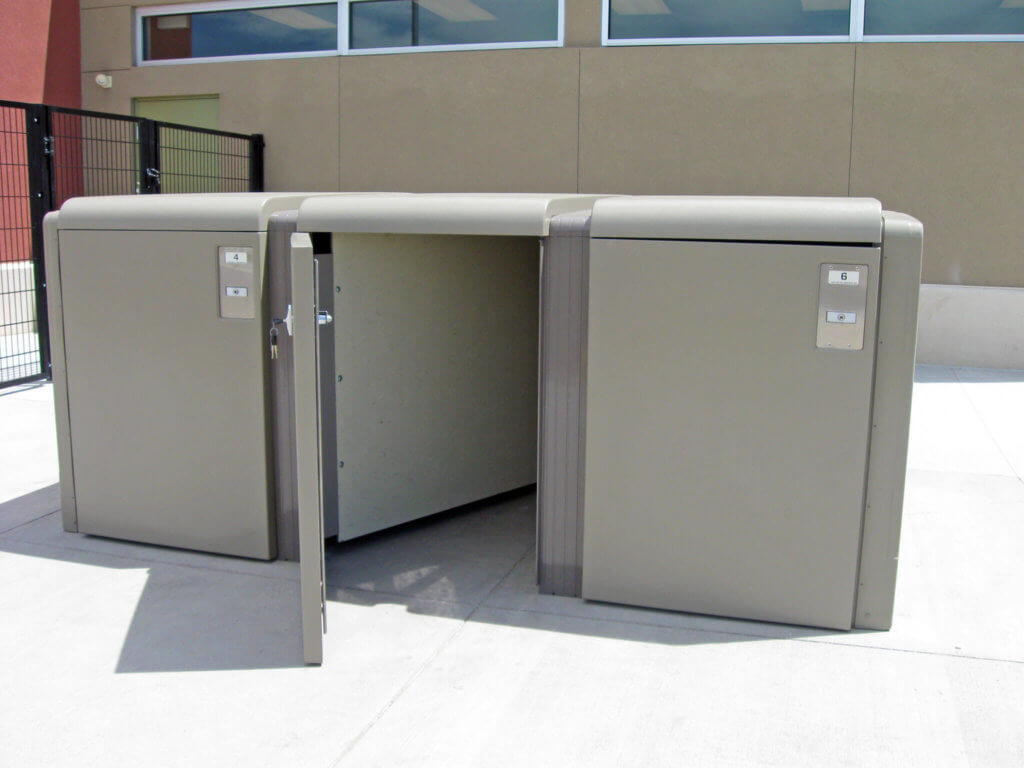
Provide at least one secure bike parking facility capable of securing at least 5 bikes. (100 tenant-occupant parking spaces X 5% = 5) In this case, a ProPark Bike Locker Bank with three lockers would provide secure bike parking for up to 6 bikes and would satisfy the CALGreen long-term bike parking requirement. The modular, interlocking design of the CycleSafe’s ProPark® bike locker allows expansion to banks of two, three, four—even twenty lockers. Each bike locker accommodates two bicycles, one bike per door.
Example 2
A new facility with 380 vehicular parking spaces is being built. The building is expected to have 225 full-time employees during its normal hours of operation.
Short-Term Bike Parking Requirement
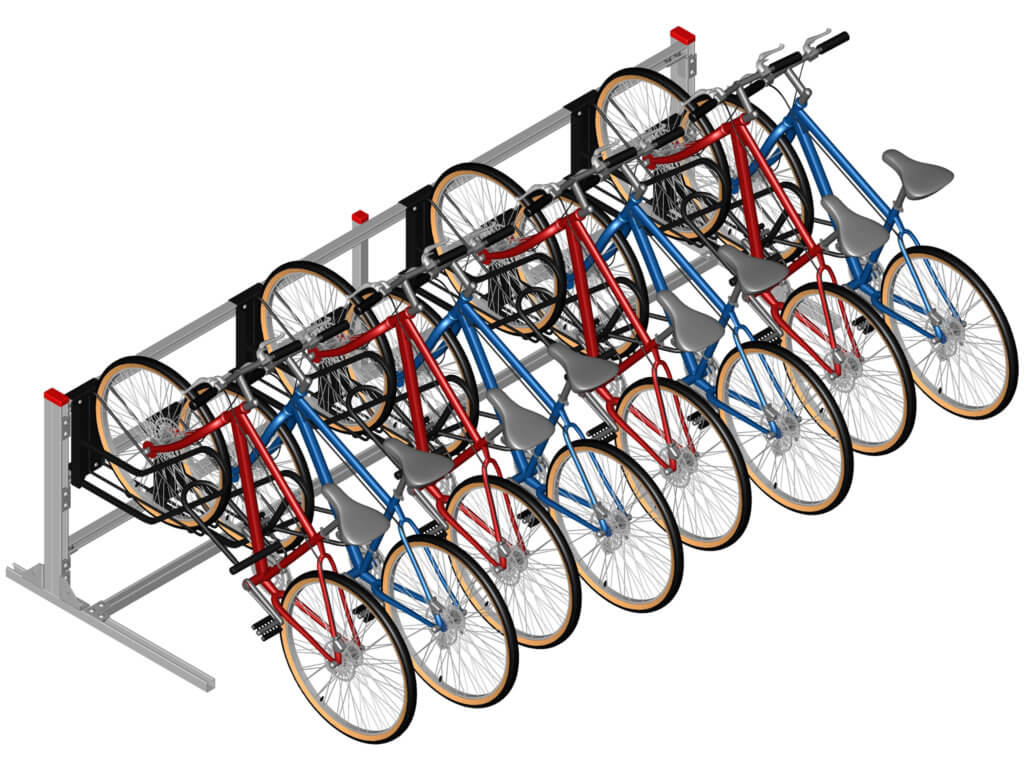
Within 200 feet of the visitors’ entrance, provide permanently anchored bicycle racks that allow at least 8 bikes to be parked in the racks. (155 new vehicular parking spaces for visitors X 5% = 7.75.) In this case, a CycleSafe Bike Stall could be used to provide secure bike parking and minimize the footprint of bike parking.
Long-Term Bike Parking Requirement
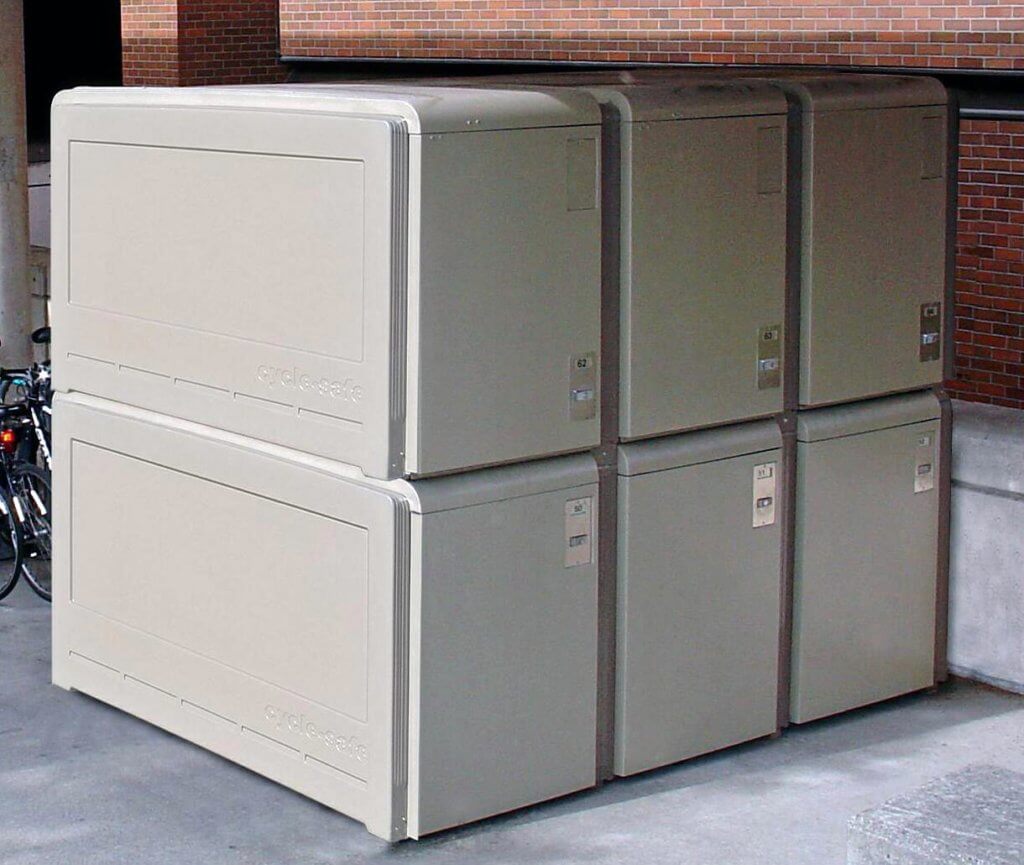
Provide at least one secure bike parking facility capable of securing at least 12 bikes. (225 tenant-occupant parking spaces X 5% = 11.75) In this case, 6 double-tier bike lockers would provide secure bike parking for 12 bikes and would satisfy the CALGreen long-term bike parking requirement. CycleSafe’s ProPark Double-Tier bike lockers may be stacked to minimize the footprint of long-term bike parking facilities, or placed in rows as site requirements allow.
Example 3
A new shell building is being built as part of phased construction with 100 vehicular parking spaces. The building will likely have 65 full-time employees working at any time during its normal hours of operation.
Short-Term Bike Parking Requirement
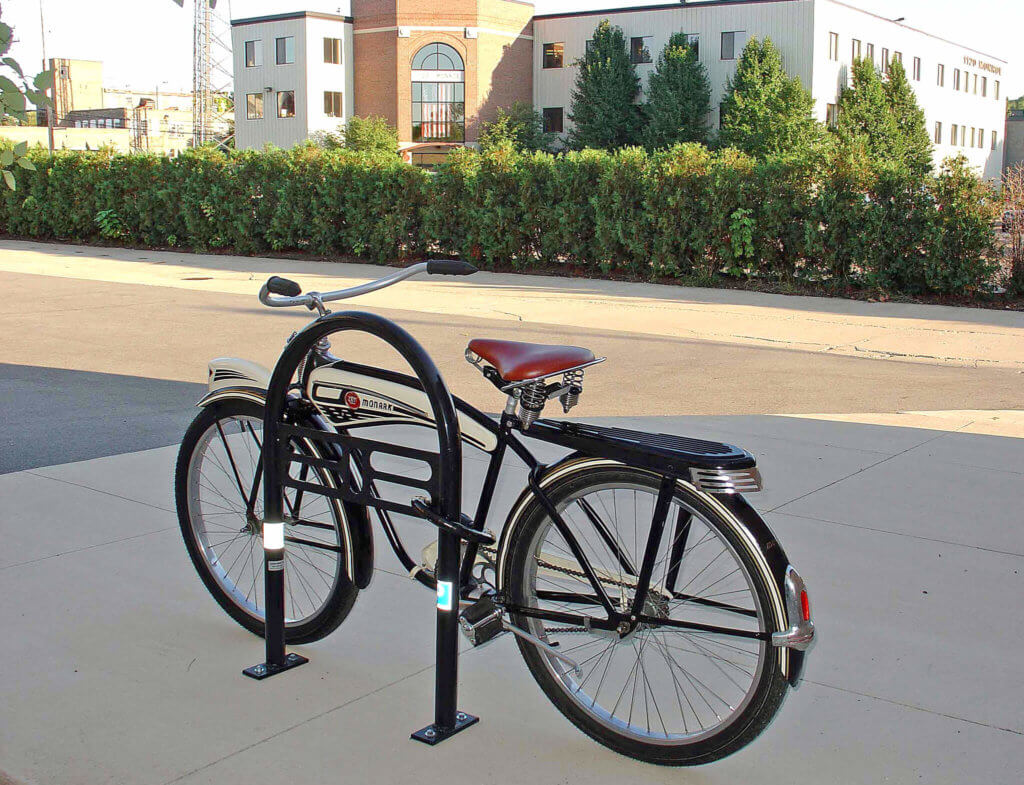
Within 200 feet of the visitors’ entrance, provide permanently anchored bicycle racks that allow at least 2 bikes to be parked in the racks. (35 new vehicular parking spaces for visitors X 5% = 1.75.) In this case, a single CycleSafe U-shaped commercial bike rack could be used to secure two bikes.
Long-Term Bike Parking Requirement
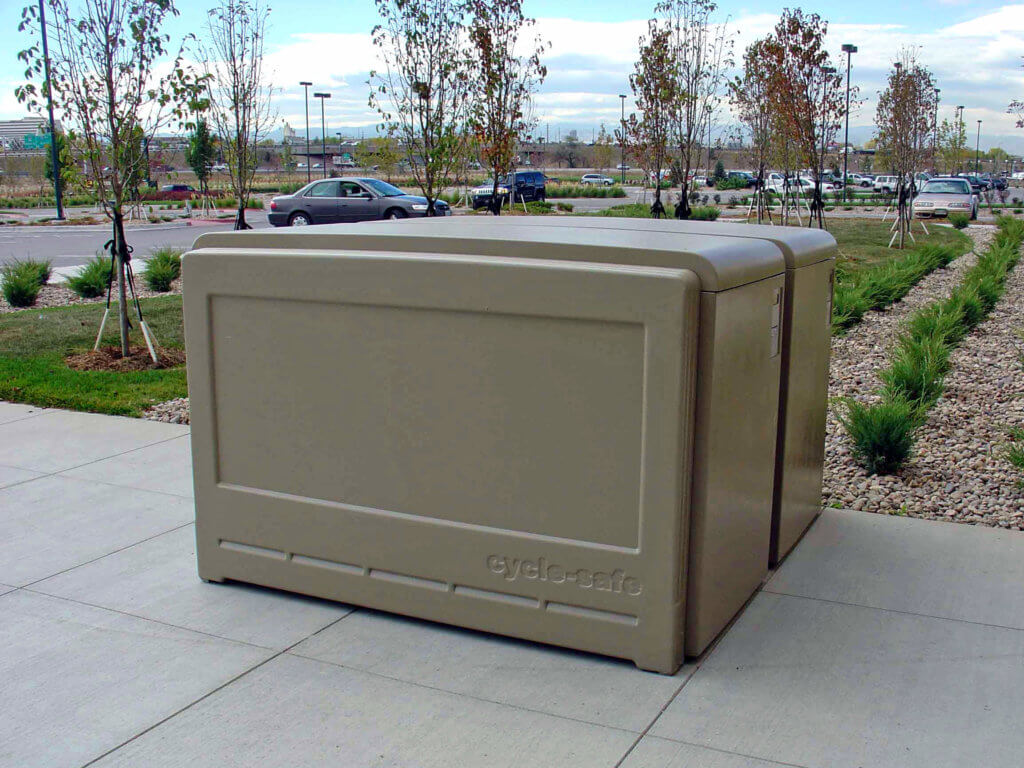
Provide secure bike parking capable of securing at four bikes. (65 tenant-occupant parking spaces X 5% = 3.25.) In this case, two CycleSafe ProPark® Bike Lockers would provide secure bike parking for four bikes and would satisfy the CALGreen long-term bike parking requirement. Bicycle lockers provide the ultimate security and protection to encourage a cycling community.
Review
- Local ordinances may require more short- or long-term secure bike parking than CALGreen does. Building owners and site planners need to make sure to they check both CALGreen and local ordinances for the required amount of secure bike parking.
- CALGreen specifies minimums. Employers may wish to provide more long-term bike parking than is required. Employee benefits, such as secure bike parking, can attract and retain staff members.
- There are numerous commercial bike parking solutions. These include racks for bike rooms, outdoor bike shelters, and bike corrals. You can also access further information on CycleSafe’s CALGreen Bike Parking Solutions.
- Secure bike parking should complement the building site. It’s important to know bike parking layout and design dimensions for site planning and to ensure adequate space for user access.
- If you’re considering a bike room, CycleSafe has various examples of bike room layout considerations and can assist with planning your project.
- To pursue LEED certification for a site, check out CycleSafe’s LEED Credits for Bike Parking.
